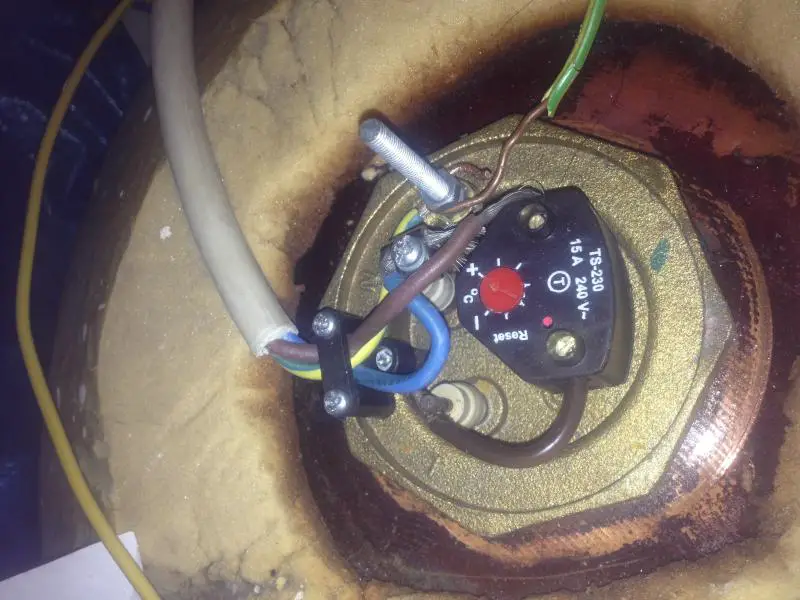BTW you can find a multimeter at Maplin for around a tenner.
But the OP also needs to know how to use it - and in a manner that a) won't cause personal injury, or b) blow the meter up, or both.
Based on the thread so far, and the photo of the work done, I'd suggest the OP consider carefully if they are really competent to start doing testing on a live circuit.
It needs to be set to "AC Volts" (the markings for this vary - so check the instructions), on a range of at least 250V, and the meter switched on.
Making sure you are stood on a dry floor, preferably in shoes that will provide some insulation, and not touching anything else - hold the probes by their insulated parts so you are not likely to touch the exposed metal tips. It doesn't matter which probe is which for AC.
It cannot be stressed enough, you are working on a live circuit with a lethal level of voltage. It is vital that you do not touch anything conductive - and especially so that you pass a current up one arm, across your chest (ie close to the heart), and down the other arm or down your legs.
Taking care not to touch anything else, either with the probe or your hands, touch one probe to the stud with the blue neutral wire, and the other probe to the terminal on the stat with the brown live wire of the supply. The meter should indicate around 240V (give or take a bit). If not, then you don't appear to have a supply - check the fuse(s) and/or circuit breaker(s) in the supply to the heater.
Now move the probe from the brown supply wire, to the terminal with the the brown wire coming out of the bottom side of the stat. The meter should again read around 240V. If there is nothing now then that suggests the stat isn't closed.



